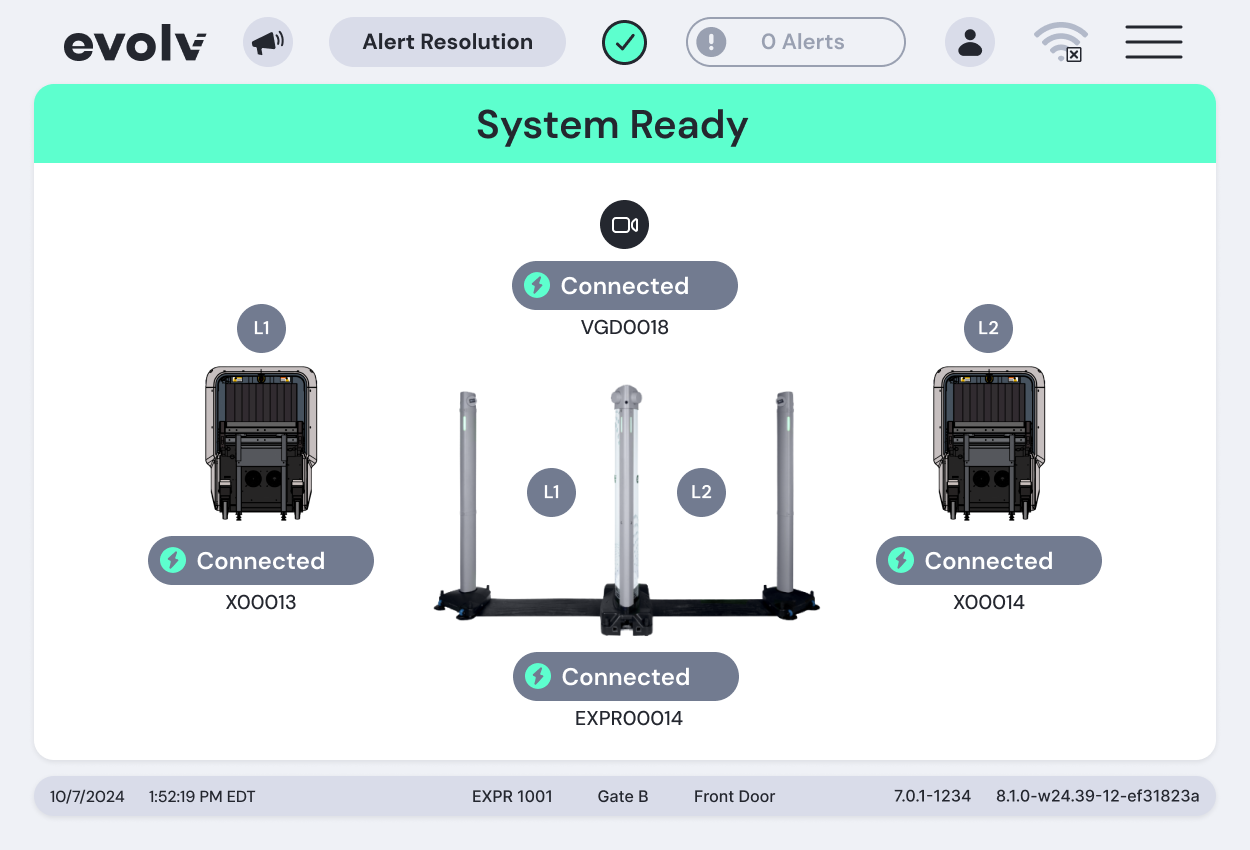Evolv Technology
Tablet UX Research
Evolv Technology is a weapon detection company outside Boston, MA. I currently lead the ux research being done, while helping create designs on apps, user interfaces, promotional materials, and more.
Role: Lead UX Researcher
UXR Methods: Survey, on-site interviews, user testing, beta testing, personas, journey maps
Task
Evolv needed to reevaluate the functionality and design of the tablets used by on-site security guards, especially with the upcoming integration of a new alerting product. This presented the perfect opportunity to assess the entire tablet experience and optimize it for the needs of the guards.
My Role
Here are the three phases of the project to easily understand what my role is:
Observations & Interviews
Client: Evolv Technology
I began by conducting on-site observations in October and November to understand how guards were currently using the tablet, identifying which features were used frequently, which were ignored, and where pain points existed. I synthesized these insights and presented them to the engineering and design teams to inform the redesign.
Tools: Figma, Microsoft Forms, Otter.ai
User Feedback
Once initial concepts were developed, I gathered user feedback from current customers to validate the proposed updates. I then designed and facilitated in-office usability testing sessions that simulated real-world guard workflows using the newly integrated experience. I also tested, in office, our new icons to make sure they can be understood without text.
Duration: October 2024 - Now
Beta Testing
Following the tests, we ran a beta customer on-site to see how the new intergraded system worked in a real life scenario. We helped set up the intergraded tablet system, and observed its use in context. We concluded the research with interviews to gather final feedback and identify areas for continued iteration.
Observations & Interviews
Starting this process I talked to the engineers to understand how the tablet worked. From there I talked with the engineers to find out what their goals for me were. I then drafted my observations and discussion guide.
Testing Scenario
From here went onsite to 5+ locations talking to guards (operators) and admin.
Goals:
• What is the necessary information?
• What are the guards not using?
• See what their tag preferences are
• How are we interaction with the tablets?
• What do customers think about our new proposed design?
Here is one of the sites I visited and two features of the tablet.Overall Insights
• Overall love the tablet, easy to use, & love customization
• Only guards/operators use the tablets. But only admin know the full capability of the tablet.
• Admin have get called in when a problem occurs.
• Overall prefer new design & are excited for the release.
Asking the guards:
“True or false: The tablets have auto dismiss.” “False” “It is actually true, we do have auto dismiss.”
This shows an interesting design space. Where we are designing for guards to use the tablet but not allowing them to use or know the full capabilities. There are some areas the guards should not be able to touch such as the sensitivity setting, but this brings up the question how much capabilities should they know?
User Feedback
Next was to create a user testing session in office to simulate a real life scenario using our new integrated tablet.
Overall Insights
• For a high stress environment 3 guards are needed
• Intergraded tablets are working well
“I felt overwhelmed when it was just the two of us.” (One guard at Express & one at Expedite)
From here we create and then wanted to test out our hypothesis: We assume 3 guards are needed to run Express and Expedite smoothly with continuous flow. We assume guards at each station will not use intergraded tablet but an overall guard will use it.
Overall Insights
• For a medium stress environment 3 guards are needed
• The head guard needs to stop flow if needed
“As one person at Expedite it was too much for me, I couldn’t check the alerted bag and watch people walking through Express.” -Participant alone at Expedite
Left: Original design. Right: Proposed design.Round One User Testing
Goals:
• Simulate high traffic & high alert rates
• Find out lowest number of guards needed
Round Two User Testing
Goals:
• Simulate low to medium traffic & low to medium alert rates
• Find out lowest number of guards needed
• Practice run for testing onsite a week later
Beta Testing
After our user testing sessions it was time to go onsite. We went to a new customer who just received our new Expedite system. We wanted to gain their thoughts on our new intergraded tablet interface and how the entire experience of using this new product went.
Insights
• One guard was needed because only one person walked through around every 5-10 minutes.
• Since this is a warehouse users have multiple bags which can slow their own flow.
Next Steps
This is where we have left off, where are next steps are to go onto more sites with different alert rates & traffic rates. Aiming to include a school since they have the highest alert and traffic rate.
Personal Reflection
Communication is key—especially in a growing design organization. Since the design team was still relatively new, I quickly realized the importance of building trust and approaching cross-functional collaboration with empathy. It can be challenging for teams to welcome feedback on systems they’ve worked on for years. One of my biggest takeaways from this project was the value of being proactive: to be part of the conversation, you have to actively put yourself in it. By showing up, listening, and sharing insights thoughtfully, I was able to build stronger relationships and drive impact through research.
Testing Scenario
• Low alert rate & low foot traffic.
• Observations and interviews.
• See what admin would like to see when setting up the intergraded tablets.





